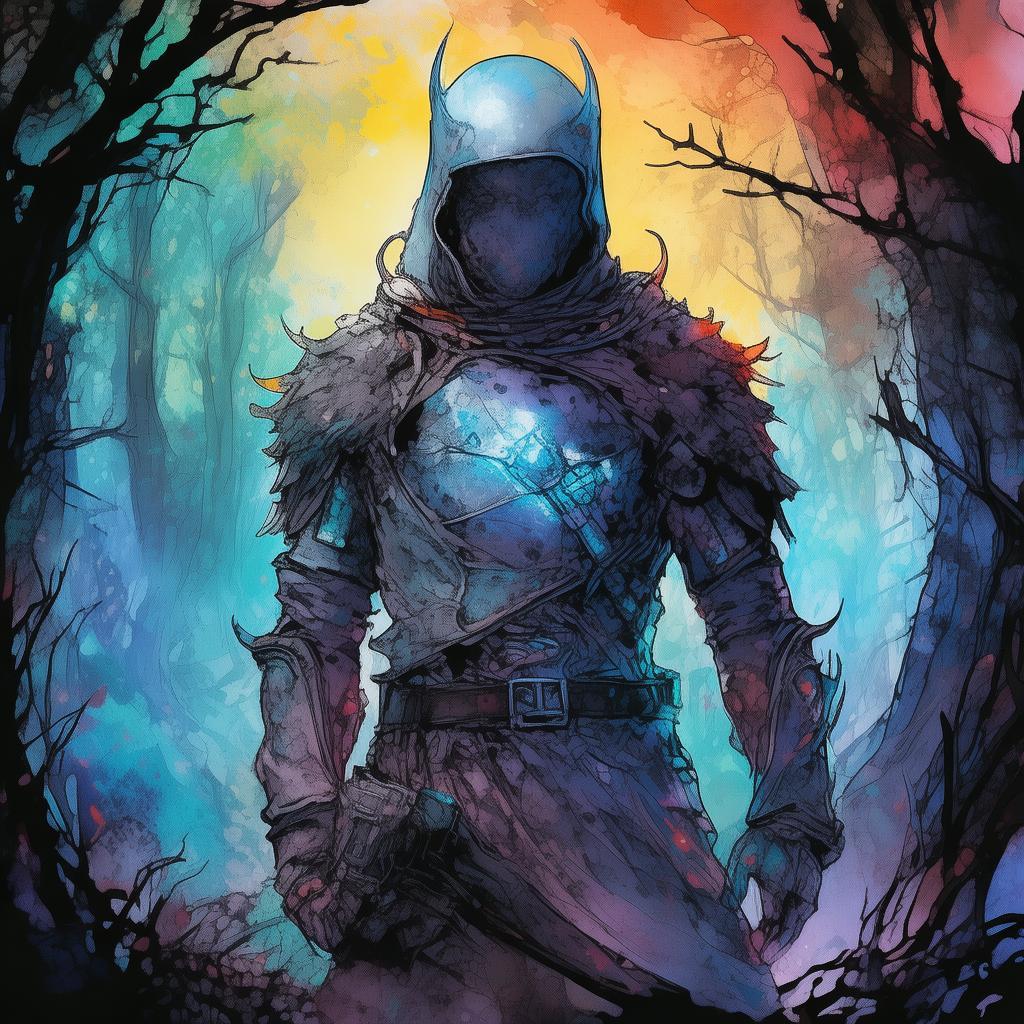The Echoes of Plague: A Symphony of Despair and Hope
In the quaint town of Luminara, where the sun cast its golden hue upon cobblestone streets, the sound of a violin echoed through the air. It was a sound both soothing and foreboding, like a lullaby that foretold the end of days. This violinist, known only as the Symphony, had a unique gift: her melodies could capture the essence of the town's collective despair and hope amidst the encroaching shadow of a plague that had claimed countless lives.
The town was under lockdown, its once-bustling markets silent and its people cloistered within their homes. The plague had come swiftly and with a fury that none could withstand, turning the vibrant tapestry of life into a monochrome canvas of sorrow. It was in this climate of despair that the Symphony took to the streets, her violin the only instrument that dared to challenge the silence.
One night, as the townspeople huddled close to their hearths, a figure approached the Symphony, her eyes weary yet filled with determination. "You play well," she said, her voice barely above a whisper. "But your melodies do not match the despair of the town."
The Symphony paused, the violin's strings still trembling with the remnants of her last note. "How can they not?" she asked, her eyes meeting the woman's.
"The despair is deep, and it needs a voice," the woman replied. "Your melodies carry a hope that the people need to hear."
Intrigued, the Symphony agreed to compose a piece that would resonate with the townspeople's collective spirit. She spent the following nights in her small apartment, the room dimly lit by a flickering candle. The music emerged slowly, a tapestry of notes that intertwined despair with hope, a melody that felt both alien and deeply familiar.
The night she performed this piece, the streets of Luminara buzzed with anticipation. The Symphony stood before her audience, the violin in hand, her eyes closed, as if lost in the music herself. As the first note echoed through the night, the town fell silent, held in rapt attention by the haunting melody.

The piece began with a slow, melancholic intro, the violin's strings conveying a sense of loss that was palpable. The Symphony played with such intensity that it seemed her very soul was poured into the music. The townspeople, some clutching their hearts, others with tears streaming down their faces, listened as the melody transformed from despair to a shimmering hope.
It was during the most poignant part of the piece, when the melody reached a crescendo, that a sudden commotion broke the silence. The townspeople rushed from their homes, some carrying injured loved ones, others searching for help. It was then that the Symphony realized the full impact of her music.
As she played, the people of Luminara began to rally, their despair giving way to a newfound strength. They worked together, sharing resources, and offering aid to those in need. The music had not only captured their emotions but also united them in their fight against the plague.
Days turned into weeks, and the tide began to turn. The Symphony's music became a beacon of hope, a reminder that even in the darkest of times, there was light. As the number of infected dwindled, the town's people emerged from their homes, their faces alight with a newfound resolve.
The Symphony continued to play her melodies, each one more powerful than the last, until the town was declared plague-free. The Symphony, now known as the Town's Guardian, was hailed as a hero, her music the soundtrack of Luminara's recovery.
Years later, the Symphony's music still echoed through the town, a testament to the indomitable spirit of humanity. The violin remained in the town's museum, a symbol of hope amidst despair, its strings a reminder that even in the darkest of times, a melody could rise, bringing despair and hope in a symphony of life.
In the quiet of the museum, a young boy approached the exhibit, his eyes wide with wonder. "Mommy, what's this?" he asked, pointing to the violin.
"It's called 'The Symphony of Despair and Hope,' and it's a story of a town that came together during a great trial," his mother replied, her voice tinged with reverence.
The boy nodded, his eyes reflecting the light from the violin. "Can I play it?" he asked, reaching out to touch the strings.
His mother smiled, her heart swelling with pride. "Of course you can, but remember, it's more than just a melody. It's a story of love, of courage, and of hope."
And so, as the boy's fingers danced across the strings, the Symphony's melody once again filled the room, a reminder that even in the face of the worst, there is always a melody of despair and hope.
✨ Original Statement ✨
All articles published on this website (including but not limited to text, images, videos, and other content) are original or authorized for reposting and are protected by relevant laws. Without the explicit written permission of this website, no individual or organization may copy, modify, repost, or use the content for commercial purposes.
If you need to quote or cooperate, please contact this site for authorization. We reserve the right to pursue legal responsibility for any unauthorized use.
Hereby declared.









